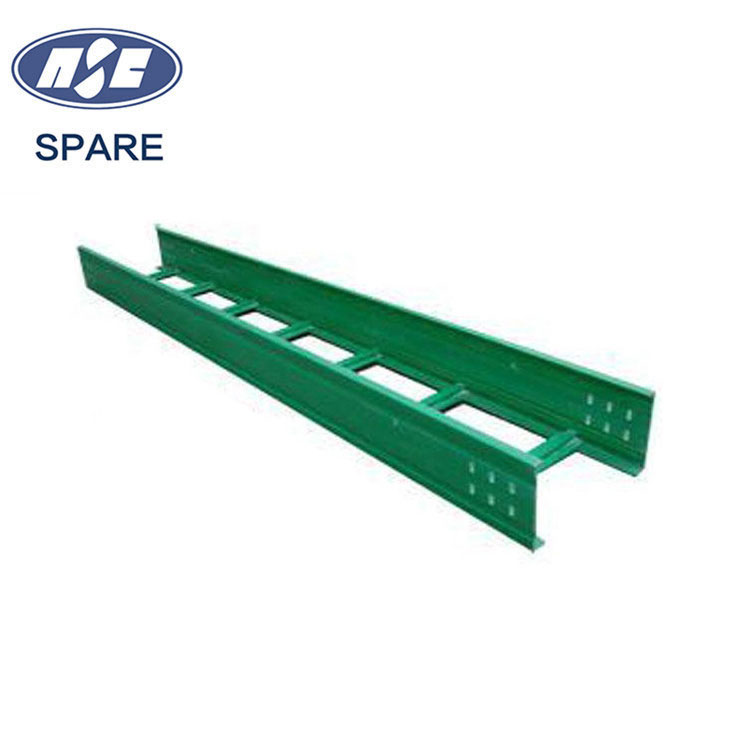Properties of FRP Ladder Rail Profiles
2024-07-05
FRP (Fiber Reinforced Plastic) ladder rail profiles are structural components used in the construction of ladders, typically for industrial, commercial, or residential applications where corrosion resistance, durability, and strength are essential. FRP ladder rail profiles are made from a composite material consisting of a polymer matrix reinforced with fibers such as fiberglass, carbon fiber, or aramid fiber. Here's an overview of FRP ladder rail profiles, including their properties, advantages, applications, and common designs.
Properties of FRP Ladder Rail Profiles
1. Corrosion Resistance:
- FRP ladder rail profiles are highly resistant to corrosion, making them suitable for use in harsh environments such as chemical plants, wastewater treatment facilities, and coastal areas.
2. High Strength-to-Weight Ratio:
- Despite being lightweight, FRP ladder rail profiles offer high strength, comparable to steel but with lower weight. This makes them easy to handle during installation and transportation.
3. Non-Conductive:
- FRP is an excellent insulator and does not conduct electricity, making FRP ladder rail profiles ideal for use in electrical substations, power plants, and other areas where electrical hazards are present.
4. UV Resistance:
- FRP ladder rail profiles are resistant to UV radiation, ensuring long-term durability and color stability when exposed to sunlight.
5. Chemical Resistance:
- They are resistant to a wide range of chemicals, including acids, alkalis, solvents, and corrosive gases, making them suitable for use in chemical processing facilities and laboratories.
6. Low Maintenance:
- FRP ladder rail profiles require minimal maintenance and are easy to clean, reducing lifecycle costs compared to traditional materials like steel or wood.
7. Fire Retardant:
- FRP ladder rail profiles can be manufactured with fire-retardant additives to meet specific fire safety requirements.
Advantages of FRP Ladder Rail Profiles
1. Safety:
- Non-conductive and slip-resistant properties reduce the risk of electrical accidents and slips, trips, and falls.
2. Durability:
- Resistant to corrosion, rust, rot, and degradation, ensuring long service life even in harsh environments.
3. Versatility:
- Can be customized to meet specific design requirements, including length, shape, and color.
4. Lightweight:
- Easy to handle and install, reducing labor costs and installation time compared to heavier materials like steel.
5. Environmental Friendliness:
- FRP ladder rail profiles are recyclable and contribute to sustainability efforts by reducing the consumption of traditional materials like wood and steel.
Applications of FRP Ladder Rail Profiles
1. Industrial Ladders:
- Used in manufacturing facilities, chemical plants, refineries, and other industrial settings for access to elevated platforms, machinery, and equipment.
2. Utilities:
- Installed in electrical substations, power plants, telecommunications facilities, and water treatment plants for maintenance and inspection activities.
3. Marine:
- Utilized in shipyards, docks, marinas, and offshore platforms for access to vessels, piers, and docks, as well as for safety railings and barriers.
4. Commercial Buildings:
- Found in commercial buildings, airports, hospitals, and shopping centers for access to rooftop HVAC systems, maintenance areas, and service platforms.
5. Residential:
- Used in residential settings for access to attics, lofts, and elevated storage spaces, as well as for pool and patio applications.
Common Designs of FRP Ladder Rail Profiles
1. Round Tube:
- Tubular profile with a circular cross-section, offering a comfortable grip and aesthetic appeal.
2. Square Tube:
- Tubular profile with a square cross-section, providing a flat surface for mounting ladder rungs or steps.
3. C-Channel:
- U-shaped profile with flanges on either side, suitable for attaching ladder rungs or steps and providing added strength.
4. I-Beam:
- Structural beam profile with a vertical web and horizontal flanges, offering high strength and rigidity for heavy-duty applications.
5. Angle:
- L-shaped profile with two perpendicular legs, used for corner bracing and reinforcement in ladder construction.
Installation and Maintenance
1. Installation:
- FRP ladder rail profiles can be installed using standard hardware and fasteners, following manufacturer guidelines and industry best practices.
2. Maintenance:
- Regularly inspect FRP ladder rail profiles for signs of damage, wear, or degradation, and repair or replace as needed to ensure structural integrity and safety.
3. Cleaning:
- Clean FRP ladder rail profiles periodically with mild soap and water to remove dirt, dust, and debris. Avoid abrasive cleaners or harsh chemicals that may damage the surface.
4. UV Protection:
- Apply a UV-resistant coating or sealant to FRP ladder rail profiles exposed to sunlight to prolong their lifespan and maintain color stability.
FRP ladder rail profiles offer numerous advantages over traditional materials like steel, aluminum, and wood, making them an excellent choice for a wide range of industrial, commercial, and residential applications. By understanding their properties, advantages, applications, and common designs, designers, engineers, and contractors can make informed decisions when selecting and specifying FRP ladder rail profiles for their projects.



